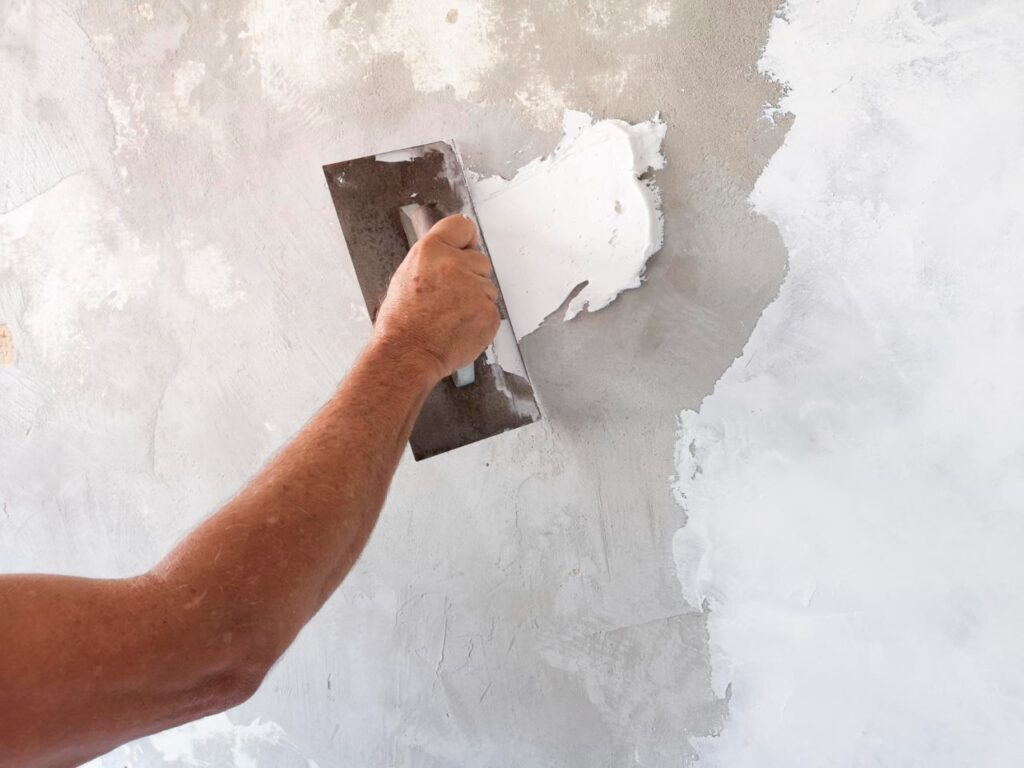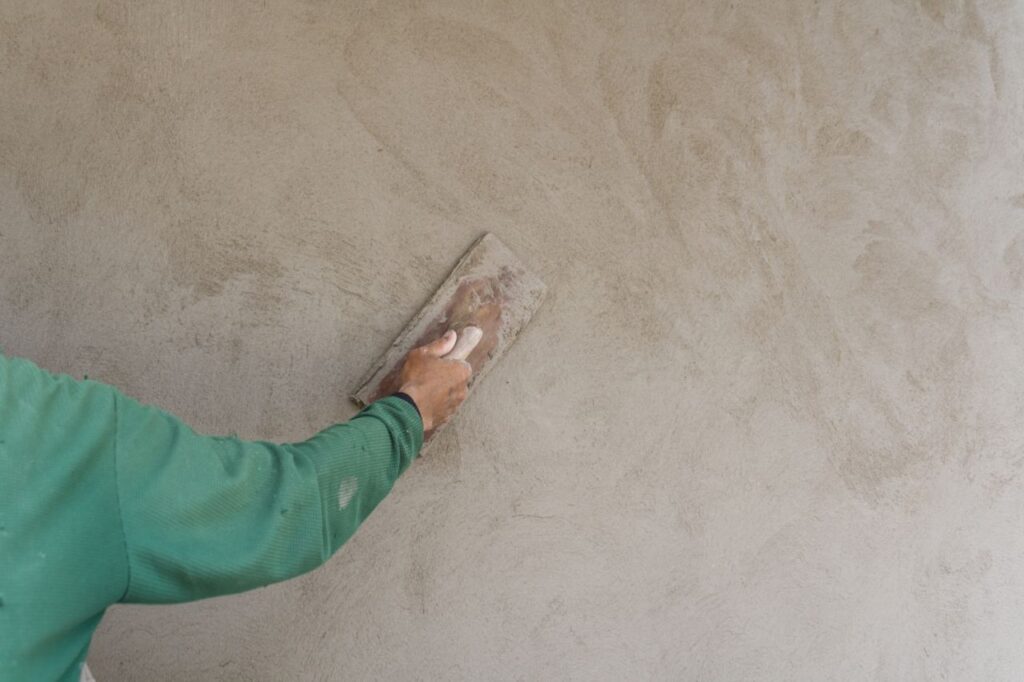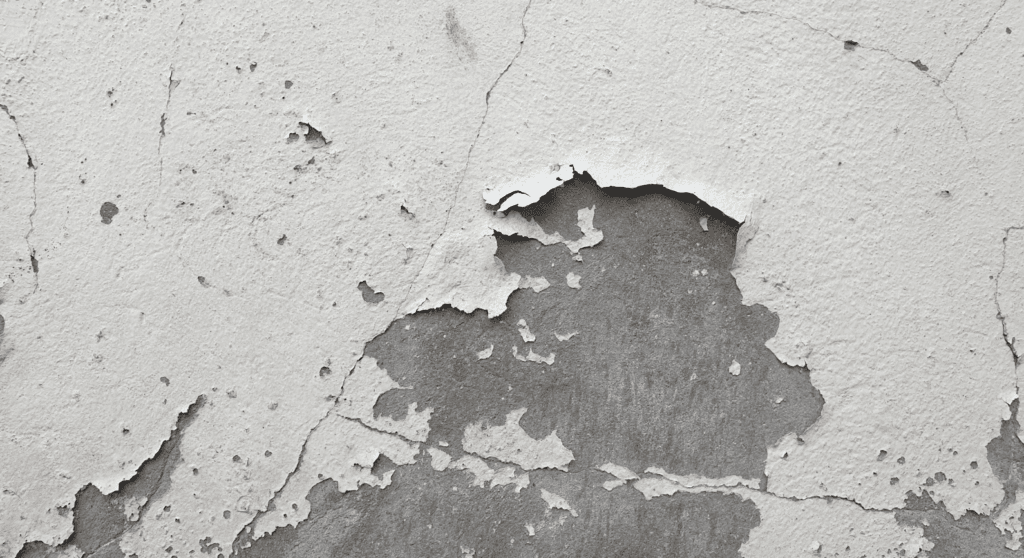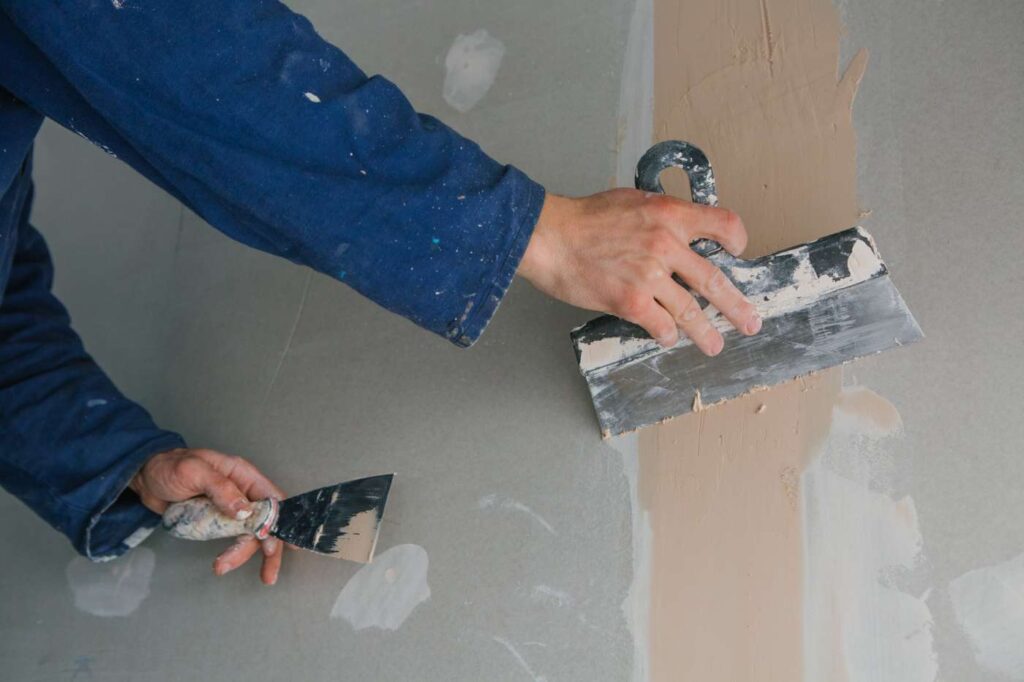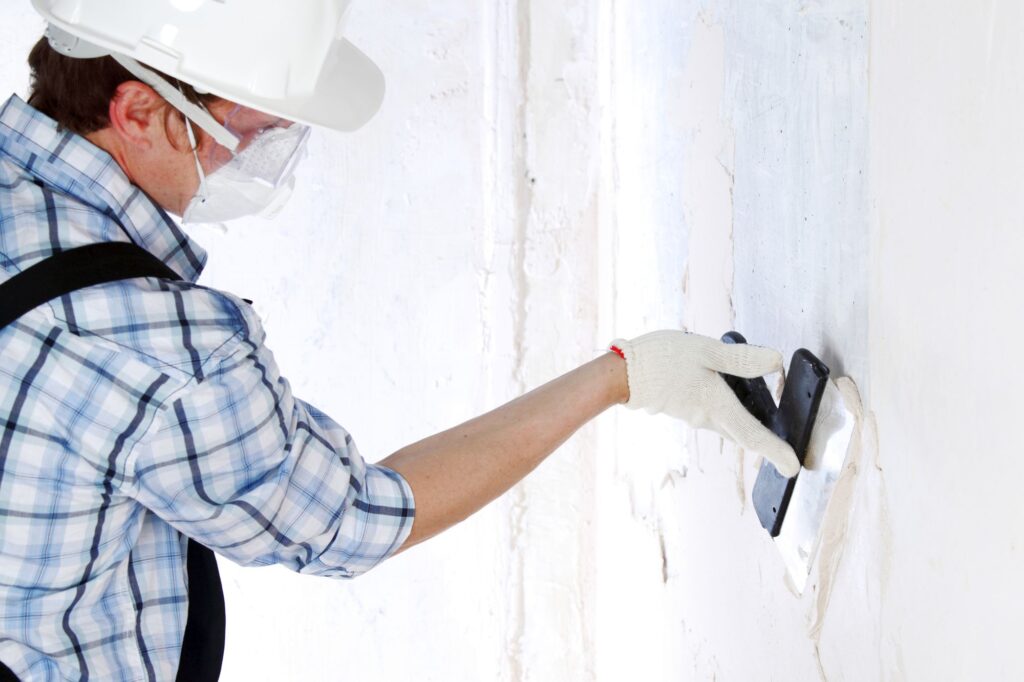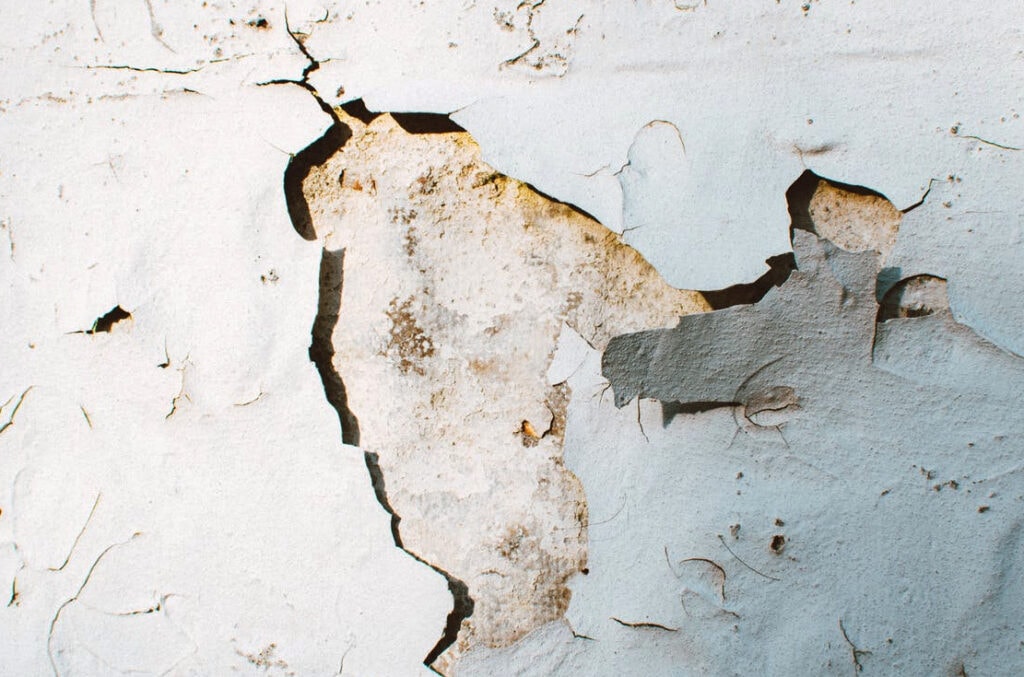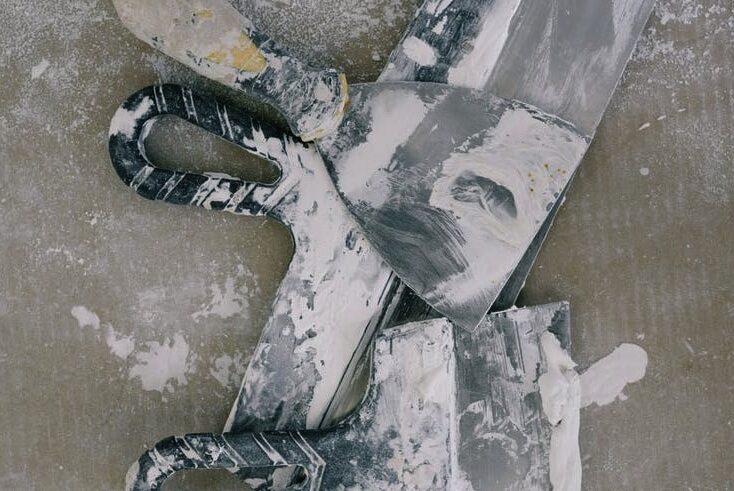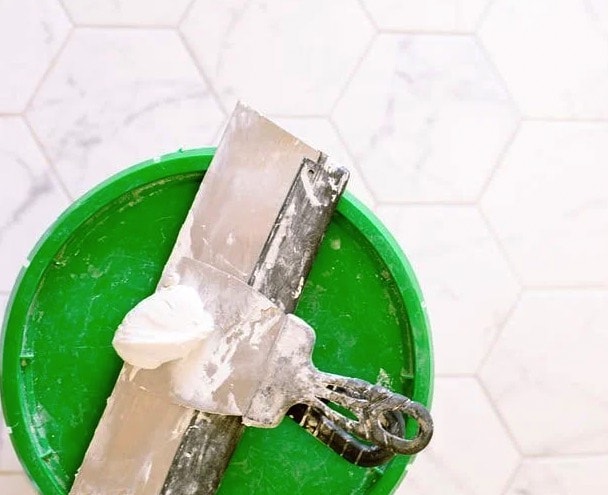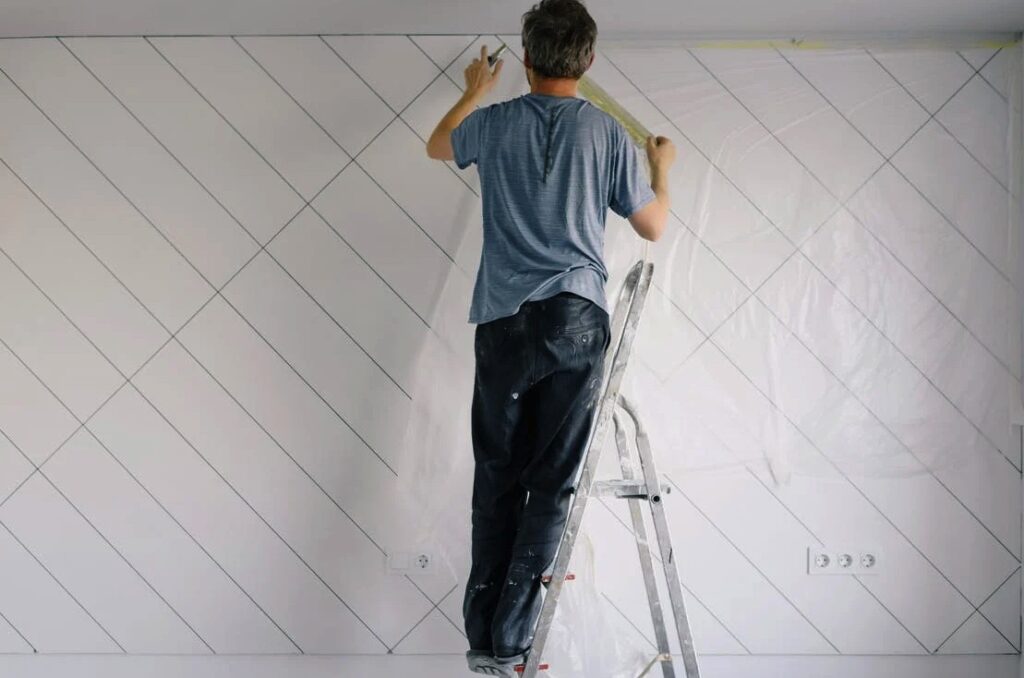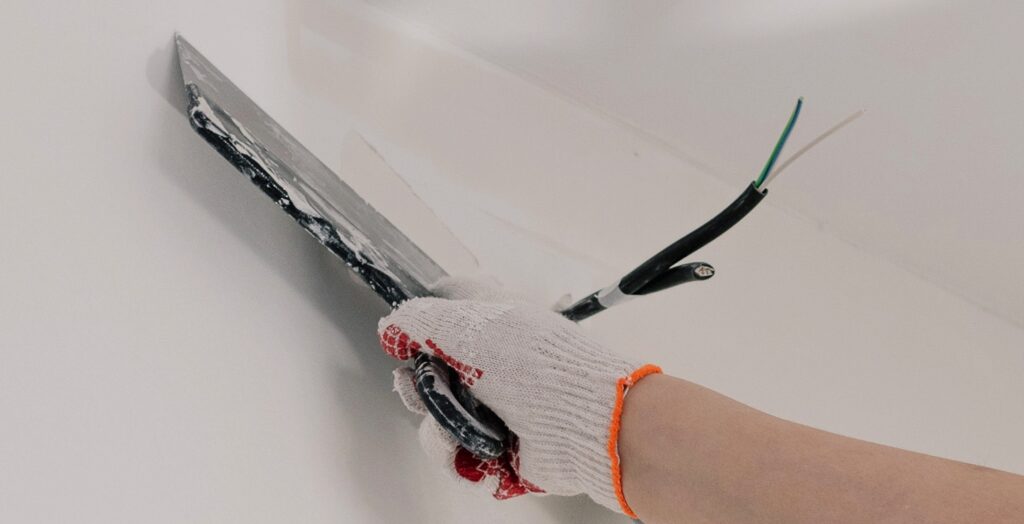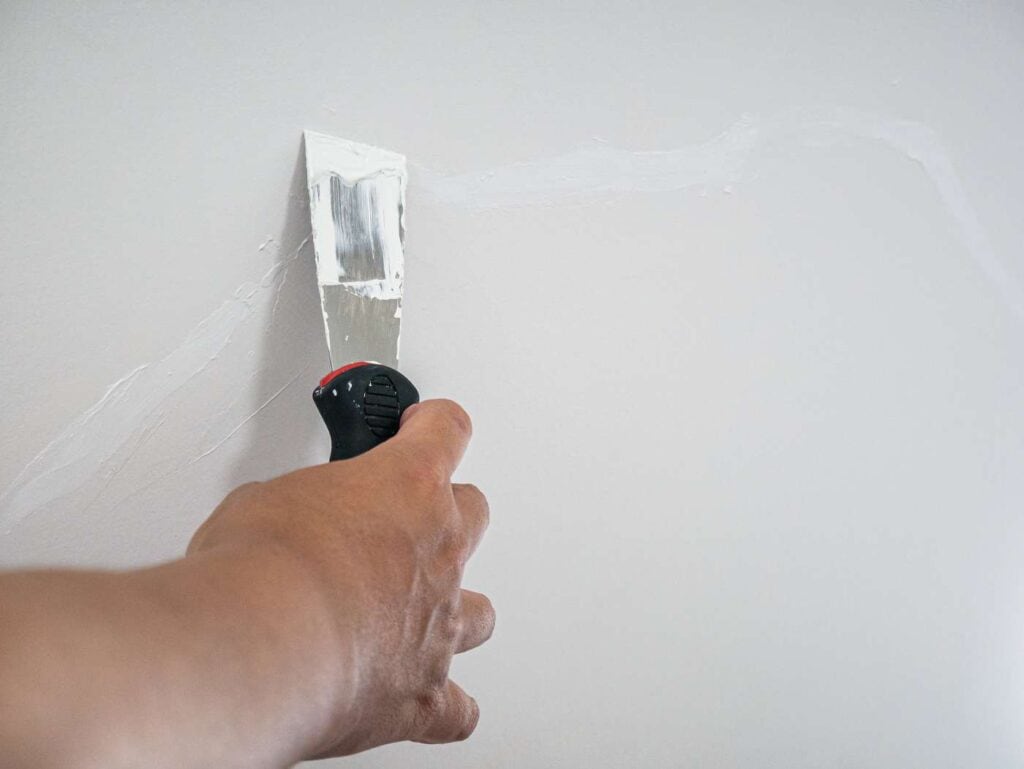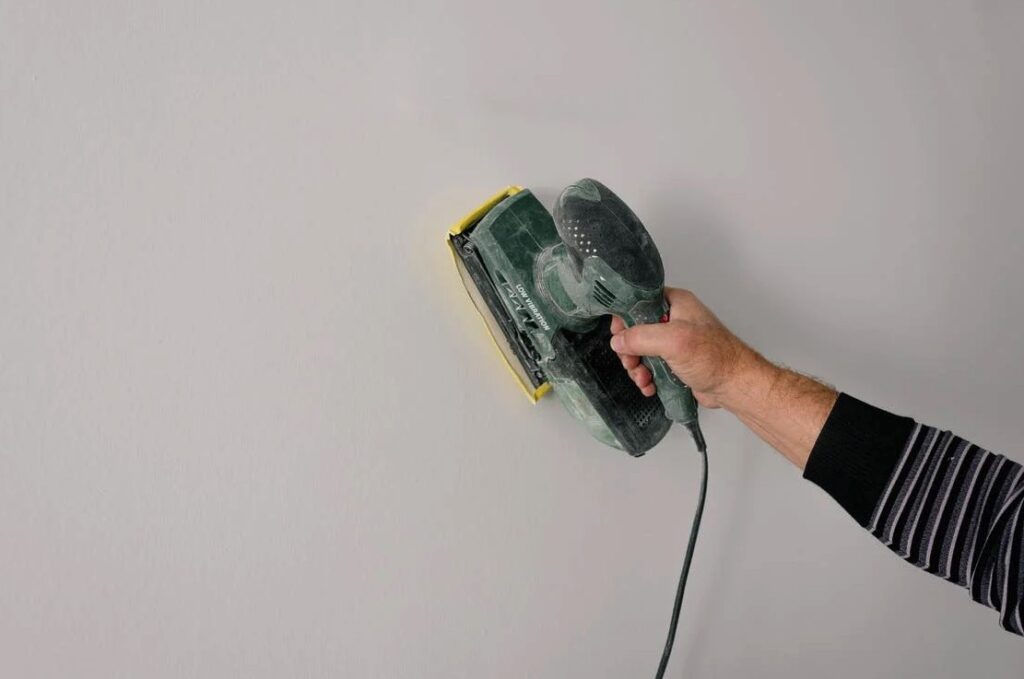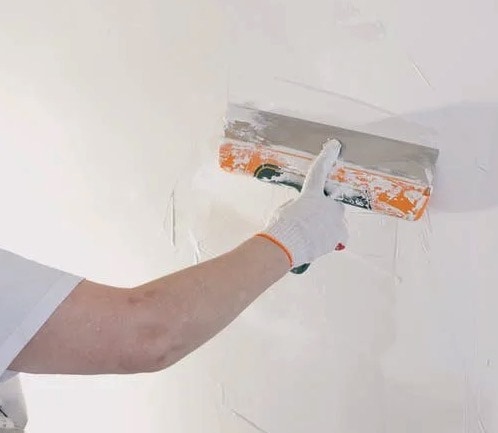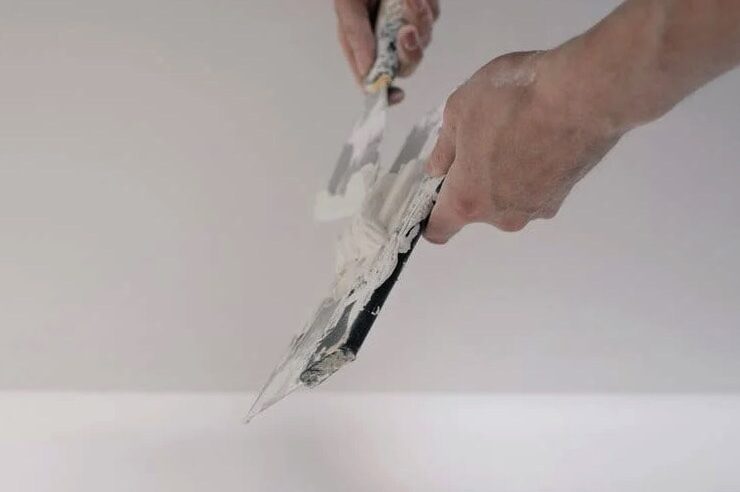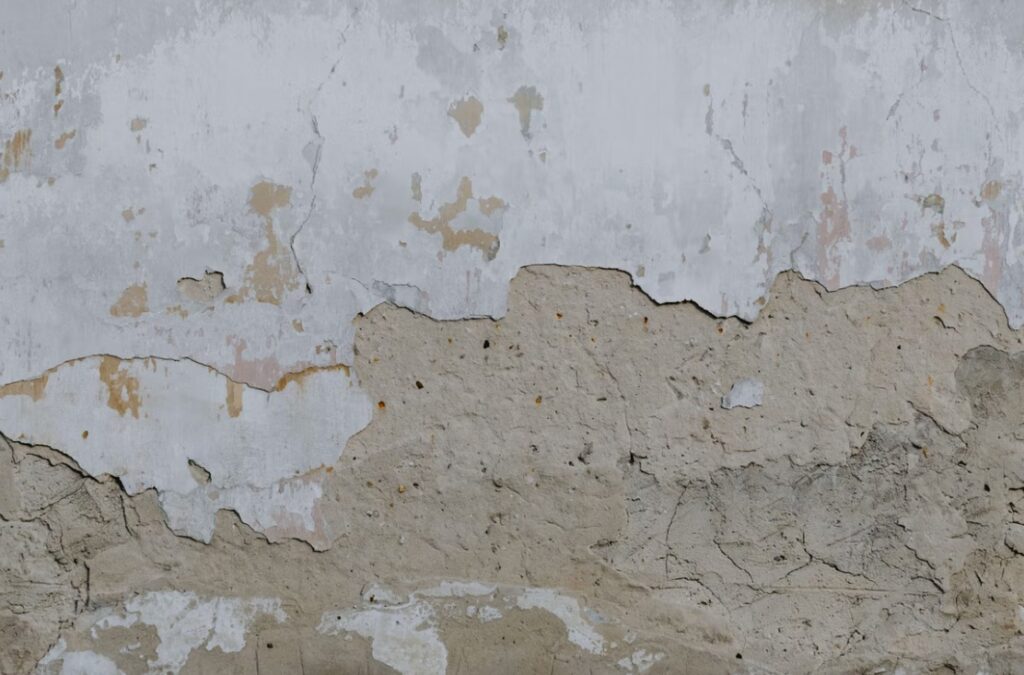The tiny fissures and blemishes in your ceilings and walls are something you might not have noticed before. Although they might not appear much, they might indicate that your plaster requires repair. Knowing when to fix plaster may save you time and money; it's a major problem for homeowners. When do plaster repairs often become necessary?
Once you notice noticeable damage to your ceiling or walls, plaster repairs are required. Your home will let you know when repairs are necessary if it has hairline cracks, peeling plaster, or even more serious problems like bulging or sagging. Ignoring these issues can only cause more damage and expensive repairs later on, so taking care of them is critical.
These outward manifestations, however, are only the beginning. In this article, we will examine typical causes of plaster deterioration and offer helpful hints for preventing and fixing these problems so that you may learn more about plaster repairs and their underlying causes and remedies. So, without further ado, let's dive into plaster repairs and ensure your home's interior surfaces last and look great.
A Guide to Plaster
Plaster is a flexible building material that is widely utilised in construction for a variety of applications. Depending on the plaster used, it often combines many important components, including gypsum, water, and sometimes extra additions. Plaster may be applied wet and hard as it dries, resulting in a firm and long-lasting surface.
Usages Frequent In Construction
- Wall Finishing: A common technique for producing smooth and appealing interior wall surfaces is plastering. Applying a thin coating over drywall or other substrates may produce a smooth, paintable surface.
- Ceiling Finishes: Ceilings can also be finished with plaster for a clean and nice look. Based on the desired look, it can be used in different styles and textures, like smooth or popcorn.
- Ornamental Molding: Mouldings, cornices, and other ornamental architectural elements may be crafted from plaster in both commercial and residential structures.
- Patching and Repairs: Plaster is an excellent material for home repair and maintenance tasks since it can be used to patch and fix damaged walls and ceilings.
Composition Of Plaster
Depending on its intended application, plaster can have different compositions, although gypsum plaster is frequently used in buildings. The following elements are commonly found in gypsum plaster:
- Gypsum: Plaster is made from gypsum, which is essentially calcium sulphate dihydrate and its principal ingredient. To create plaster, gypsum, which occurs naturally, is crushed into a fine powder.
- Water: You may apply gypsum powder to surfaces by mixing it with water to make a paste. As the plaster dries, it hardens due to a chemical reaction set off by the water.
- Additives: Additives such as accelerators, retarders, or fibres can be used in the plaster mixture to regulate setting time, strength, and other attributes per the particular use and desired qualities.
The Most Frequent Plastering Issues
Plasterers and other dependable and skilled contractors are always available to assist you in repairing your wall properly. However, how do you determine whether your wall requires a masonry repair or a complete redo? Presently, numerous prevalent stucco issues can be observed in the walls of every household. However, in regards to contacting a professional, homeowners immediately recognise only a few issues. Consequently, this may worsen the wall issue, which could develop into a more serious problem in the future.
Now that we've discussed the importance of eliminating plaster issues, you may be wondering what these typical issues are. Now that you're here to learn about the most frequent problems with your Gyprock walls and ceiling that you could overlook or disregard, you can stop speculating aimlessly. Among them are:
Cracks
Giant fissures in gyprock walls are a typical occurrence. Even ceilings may develop these fissures, and they can widen with time. But whether the damages will worsen with time or are just an indication of the wall's age and may be remedied with some do-it-yourself work depends on the kind of damage. It is essential to seek assistance from a specialist to determine the type of cracks on the walls and ceilings. In this way, you won't have to worry about similar issues cropping up in the future.
Discolouration
Wall discolouration is another typical occurrence that foretells the problems your wall will encounter shortly. This implies that the brown stain on your wall might be an early warning sign of an impending leak. You may prevent this from happening by painting over the stain or getting expert assistance to replace the wall's plaster and deal with leaks beforehand. In this manner, you can anticipate this typical problem sooner and get it fixed when it's most needed.
Bubbling
If you try to prevent the water damage that leaks do to walls and ceilings, you may wind up with a worse problem—the plaster bubbling—than you had originally anticipated. In a few days, this bubbling plaster will begin to protrude. Since there may be no outward symptoms of this bulging, it is critical to identify the cause of the plaster's bubbling and get immediate assistance from an expert to repair the plasterboard. Doing so will save you from dealing with the serious issue of the plaster walls bulging.
Diy Damage
We mostly see damage like this when people do their patching. Most people think that painting is a simple task. But no one can ensure the plaster is neat and finished well. This is mostly because neat layers and fine plaster finish are skills learned over time. In the end, if you do the patching yourself, the wall will have a finish that doesn't look right and may even look damaged.
Door Damages
Occasionally, when you open the door to a room or forcefully push it against the wall, you may discover that the plaster behind it has been compromised. This is frequently the result of the door handle striking the stucco wall. When you close the door, this damaged wall is generally disagreeable to the touch and becomes more noticeable. However, despite the apparent insignificance of this issue, it must be repaired by a professional.
Water Damages
It starts to show up on the wall or ceiling when you throw water on a plaster wall or leave water on the roof of the plaster wall. Besides the darkened stain, you may often notice a more noticeable water spot on your wall that keeps getting bigger. This rise in water level can hurt both the wall and its base. That is, this gyprock problem must be fixed immediately and as soon as possible.
Human-Made Damage
Are you interested in what common problems with plaster can be caused by people? Okay, that's clear. The plaster on the ceiling starts to come off when kids hit a ball or something big falls on top of the plaster wall. This could cause a strange piece of gyprock to break off the wall.
FAQs About Plaster Repair
Plaster repairs are typically needed when you notice cracks, holes, or other forms of damage on your plaster walls or ceilings. These issues can result from various factors like settling of the building, moisture damage, or simply the natural aging of plaster.
Common signs that indicate the need for plaster repairs include visible cracks, peeling or bubbling plaster, sagging ceilings, and areas of plaster that have become loose or detached from the wall or ceiling. Water stains and mold growth can also be signs of underlying plaster damage.
While minor plaster repairs, such as filling small cracks or holes, can be done as DIY projects, it's often advisable to hire a professional plaster repair specialist for more extensive damage. Professionals have the expertise and tools to ensure a long-lasting and seamless repair job.
Several factors can contribute to plaster damage, including changes in temperature and humidity, structural settling, water leaks, and physical impacts. Understanding the root cause of the damage is essential for effective and lasting repairs.
To minimize the need for frequent plaster repairs, you can take preventive measures such as maintaining stable indoor humidity levels, addressing water leaks promptly, and avoiding structural changes that can stress the plaster. Regular inspections and maintenance can also help identify and address potential issues early, reducing the need for extensive repairs.
Fixing Walls Using Plaster
A typical scenario is that your children are playing happily in their bedroom, and suddenly, you hear something crunching. A gaping hole has appeared in your wall. Plasterboard is great for easy installation, smooth painting surface, etc., but it isn't immune to dings, fractures, and the odd big hole!
Close Up That Crack In The Wall
We can fix the damage to your plasterboard, so that's fantastic news. Doing it yourself is an option, but be prepared for some challenges if you want a professional-looking result that doesn't like a wall patch. With a professional plaster, the wall can return to its former state with a smooth finish, whereas a badly done plaster repair will likely upset you for months or even years.
Plastering Mastery
If you've ever attempted plaster repairs, you know how much practice and expertise are required to get a professional finish. Repairing a hole in a wall often entails removing the crumbling, damaged plasterboard and then reducing the opening to a square or rectangle. After that, the cavity is filled with plasterboard cut to size, skimmed, and painted. The patch must be well-fastened to prevent fractures from developing later. At Profix, our skilled repair staff knows all the tiny details to ensure your repair is effective.
Repairing Wall Cracks
Wall and ceiling cracks are typically caused by shifting Gyprock or plasterboard. Fractures might form when a sheet isn't firmly fastened to the wood frame. Another factor that might lead to shrinking and cracking is dry weather.
A Step-by-Step Guide to the Maintenance Checklist
The secret to successful management of commercial buildings in Australia is thorough upkeep. This commercial building maintenance checklist aims to give property managers in Australia a road map for meeting the specific requirements of commercial property owners, emphasising making sure tenants are happy, safe, and compliant.
Regular Maintenance Is Essential
The foundation of every professionally managed commercial property is regular maintenance, which is essential to the performance and durability of your investment. Beyond just keeping your building in good repair, it's about creating a vibrant community where residents can relax in safety and contentment, all while fully complying with all applicable laws and ordinances.
Preventative maintenance is a kind of property insurance. It protects your financial interests by seeing problems early on and fixing them before they become expensive crises. In addition to saving money long-term, you can create a safe atmosphere for your renters by promptly resolving these problems. Consequently, this can make the home more desirable to potential tenants and increase the likelihood that current tenants will stay.
Possible Maintenance Neglect Risks
However, if you neglect regular maintenance, it might lead to a domino effect of issues that are detrimental to your home and business. Some potential risks of not adhering to a thorough maintenance plan are as follows:
- Higher Long-Term Costs – In the short run, putting off maintenance may appear economical, but it usually results in more expenses in the long run. Minor problems have the potential to grow into larger ones that call for more involved and costly fixes or replacements.
- Legal and Regulatory Consequences – Legal ramifications and severe fines might follow from violating municipal laws. Regular maintenance prevents legal concerns by complying with safety, construction, and environmental laws.
- Safety Hazards – Unresolved electrical or structural concerns might put your renters' safety in danger and result in mishaps or injuries on your property. Regular maintenance and inspections can be neglected, leading to preventable safety risks.
- Decreased Property Value – Property loss can happen when upkeep isn't done. Properties that are well taken care of are more likely to draw renters. Properties in bad shape will lose value on the market and attract fewer good landlords.
- Reduced Tenant Satisfaction – If you don't do enough upkeep, your renters may have problems with everything from heating and cooling to plumbing. If a renter is unhappy, they are more likely to move out when their lease is up. This leads to high change rates and the need to search for new tenants often.
Conclusion
Plaster repairs are often necessary when there is noticeable damage to your ceiling or walls. These issues can include hairline cracks, peeling plaster, or more serious problems like bulging or sagging. Ignoring these issues can lead to more damage and expensive repairs later on. Plaster is a flexible building material used in construction for various applications, such as wall finishing, ceiling finishes, ornamental molding, and patching and repairs.
The composition of plaster varies depending on its intended application, with gypsum plaster being the most common. It is made from gypsum, which is essentially calcium sulphate dihydrate and its principal ingredient. Water is used to mix gypsum powder with water to make a paste, which hardens due to a chemical reaction set off by the water. Additives can be used in the plaster mixture to regulate setting time, strength, and other attributes.
Some common plastering issues include cracks, discolouration, bubbling, and DIY damage. Giant fissures in gyprock walls and ceilings can widen over time, but it is essential to seek professional help to determine the type of damage. Wall discolouration can be an early warning sign of leaks, and it is crucial to address this issue before it becomes more serious.
Bubbling is another common issue caused by water damage, and it is essential to identify the cause and seek immediate assistance from an expert to repair the plasterboard. Patching can also cause damage, as neat layers and fine plaster finish are learned over time.
Door damages, water damage, and human-made damage are common issues with plaster in commercial buildings. Professional repair is necessary to address these issues, as they can become more noticeable when the door is opened or pushed against the wall. Water damage occurs when water is thrown on a plaster wall or left on the roof, causing a darkened stain and a larger water spot.
Plasterboard is great for easy installation and smooth painting surfaces, but it can also cause dings, fractures, and gaps. Profix offers professional plaster repairs, which require practice and expertise. Wall cracks are typically caused by shifting Gyprock or plasterboard, and dry weather can also cause shrinking and cracking.
Regular maintenance is essential for the performance and durability of a property, creating a vibrant community where residents can relax in safety and contentment. Preventative maintenance is like property insurance, protecting financial interests by identifying problems early and fixing them before they become costly crises. This not only saves money long-term but also creates a safe atmosphere for renters, making the home more desirable to potential tenants and increasing the likelihood of current tenants staying.
Possible maintenance neglect risks include higher long-term costs, legal and regulatory consequences, safety hazards, decreased property value, and reduced tenant satisfaction. Neglecting maintenance can lead to higher long-term costs, legal ramifications, safety hazards, decreased property value, and increased tenant turnover, all of which can negatively impact the property and landlord's reputation.
Content Summary
- Plaster repairs become necessary when noticeable damage appears on ceilings or walls.
- Hairline cracks, peeling plaster, and bulging or sagging are signs that plaster repairs are required.
- Ignoring plaster issues may lead to more damage and expensive repairs in the future.
- A guide to plaster highlights its flexibility and widespread use in construction.
- Plaster is composed of gypsum, water, and sometimes additives for various applications.
- Wall finishing is a common use of plaster, providing smooth and paintable surfaces.
- Plaster is also used for ceiling finishes, offering different styles and textures.
- Ornamental molding, cornices, and architectural elements can be crafted from plaster.
- Plaster is excellent for patching and repairing damaged walls and ceilings.
- Gypsum is the principal ingredient in plaster, crushed into a fine powder for production.
- Water is mixed with gypsum powder to create a paste that hardens as it dries.
- Additives like accelerators, retarders, or fibers are used to control plaster properties.
- Plasterers can assist in repairing walls, but identifying issues is crucial for homeowners.
- Cracks, discolouration, bubbling, DIY damage, door damages, water damages, and human-made damage are common plaster issues.
- Giant fissures in gyprock walls may widen over time and require professional assessment.
- Wall discolouration can be an early warning sign of an impending leak, needing immediate attention.
- Bubbling plaster due to water damage requires immediate assistance to prevent further issues.
- DIY damage in plaster repair may result in an unsightly finish that needs professional correction.
- Door damages caused by impacts may compromise the plaster and require professional repair.
- Water damages, including stains and spots, can harm both the wall and its base if not promptly addressed.
- Human-made damage, such as hitting a ball on the plaster ceiling, can cause gyprock pieces to break off.
- Plasterboard is susceptible to dings, fractures, and big holes despite its easy installation.
- Professional plastering is essential for achieving a smooth finish and seamless wall repair.
- Plaster repairs require practice and expertise to achieve a professional-looking result.
- Repairing a hole involves removing damaged plasterboard, filling the cavity, and securing the patch.
- Wall and ceiling cracks can result from shifting Gyprock or plasterboard and require careful repair.
- A maintenance checklist is crucial for successful management of commercial buildings in Australia.
- Regular maintenance is foundational for the performance and durability of commercial properties.
- Preventative maintenance acts as property insurance, identifying and fixing issues before they escalate.
- Promptly resolving problems through regular maintenance creates a safe atmosphere for tenants.
- Neglecting regular maintenance may lead to higher long-term costs for more extensive repairs.
- Legal and regulatory consequences may follow from neglecting safety, construction, and environmental laws.
- Unresolved electrical or structural concerns pose safety hazards and may lead to accidents.
- Decreased property value is a risk of neglecting upkeep, making properties less appealing to renters.
- Well-maintained properties are more likely to draw tenants, while poorly maintained ones lose value.
- Reduced tenant satisfaction can result from inadequate upkeep, causing issues with various amenities.
- Unhappy tenants are more likely to move out, leading to high turnover rates and the need for new tenants.
- Recognising and addressing typical plaster issues is crucial for homeowners' peace of mind.
- Proper plaster repair prevents further damage and costly fixes in the future.
- Understanding plaster composition helps homeowners make informed decisions about repairs.
- Gypsum plaster's natural occurrence as calcium sulphate dihydrate is a key component in plaster.
- Water-induced chemical reactions harden plaster during the drying process.
- Additives in plaster regulate setting time, strength, and other attributes for specific uses.
- Identifying prevalent stucco issues early on prevents them from becoming serious problems.
- Proactive homeowners seek professional assistance for a variety of wall and ceiling problems.
- DIY patching may result in a finish that looks damaged and requires correction by professionals.
- Professional plaster repairs can restore walls to their original state with a smooth finish.
- Gyprock problems such as cracks and discolouration are indicative of potential larger issues.
- Regular maintenance is a roadmap for property managers to meet commercial property requirements.
- Thorough upkeep ensures commercial buildings are compliant, safe, and appealing to tenants.
